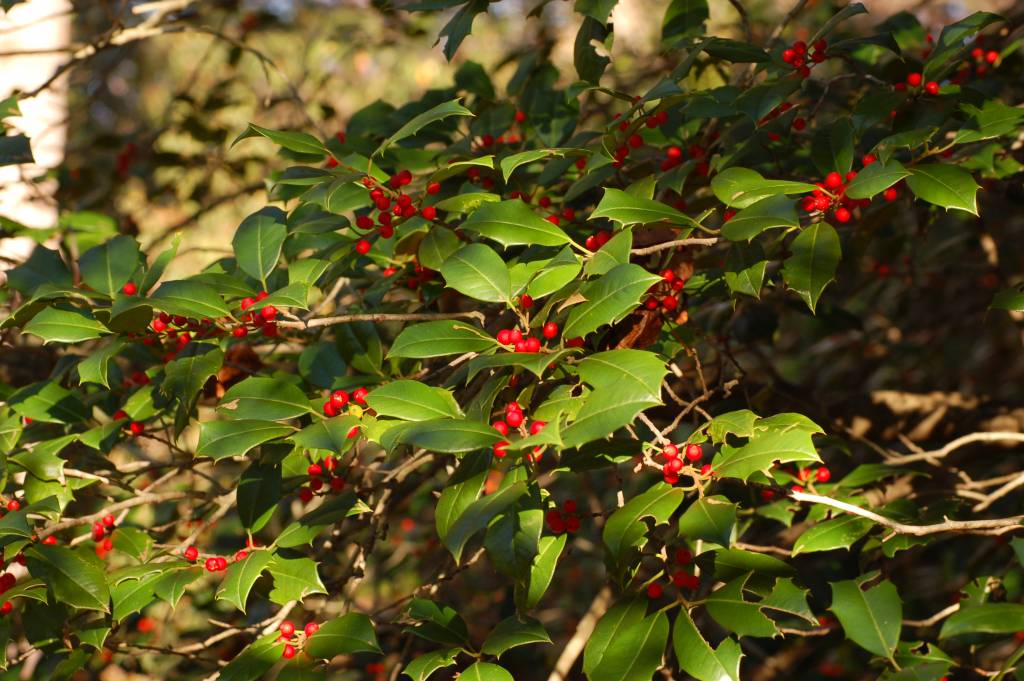As fall progresses and leaves fall from the trees, the forest reveals a glimmer of life—in the form of evergreen and red—that we can enjoy to get us through the winter. American hollies are evergreen trees that will reach up to 60 feet tall and have a moderate growth rate: faster than a magnolia, but slower than a maple tree. Leaves are dark green, tough, leathery, and sometimes shiny, and during the fall the berries begin to turn red.
The American holly also has beneficial uses for humans and animals. We as humans use the wood from the holly to make handles, rulers, piano keys, and violin pegs. Its twigs, leaves, and berries are often used as decorations for the Christmas season. You can pair the holly branches with cypress or white pine to create that festive table piece or garland for the fireplace mantle. But be aware: holly leaves have prickles on the outer edges—not a pleasant feeling if grabbed with force! The berries are also considered poisonous when consumed in large quantities, so it would be a good idea to keep your decorations out of the reach of small children and pets. Not all animals have the capability to break down the toxin in their digestion systems.
 Other uses for this evergreen in landscapes is to create a natural wall between you and that nosey neighbor. When planted along a fence line or property line with correct space, the holly can create a natural barrier that is nice to look at out your back window and will provide a year-round privacy screen.
Other uses for this evergreen in landscapes is to create a natural wall between you and that nosey neighbor. When planted along a fence line or property line with correct space, the holly can create a natural barrier that is nice to look at out your back window and will provide a year-round privacy screen.
For all you bird lovers, the American Holly provides protection, food, and shelter for the sparrow, cardinal, and American robin during the brutal cold temperatures of winter. Other ground-dwelling animals like turkey, deer, squirrel, chipmunk, fox, and raccoon will feed from the holly’s leaves and berries as well.





